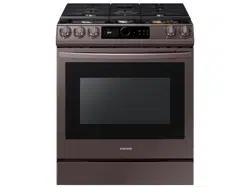Documents: Go to download!
- Owner's manual - (English, French, Spanish)
- Overview
- Cooktop
- Gas oven
- Maintenance
- Troubleshooting
Table of contents
User manual Gas Slide-in Range
Overview
Layout
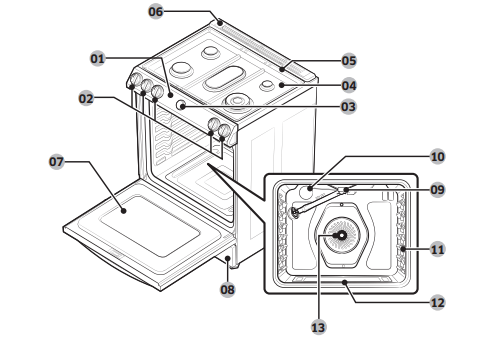
01 Touch display
02 Surface burner knobs (5 pcs)
03 Dial knob (1 pc)
04 Surface burners
05 Oven vents 06 Cooling vent
07 Removable dual oven door 08 Storage drawer
09 Broil oven burner
10 Oven light
11 Oven rack system
12 Bake oven burner
13 Convection fan / Convection heater
What’s included

Control panel

01 START: Tap to start oven operation.
02 OFF: Tap to cancel oven operation.
03 Time Option: Go to set Cook Time or Delay Start.
04 More Function and System Settings: Go to set More Functions and System Settings.
05 Smart Control: Set Smart Control function On/Off.
06 Light: Tap to turn oven light On/Off.
07 Dial knob:
- Turn Clockwise - Move focus to next / increase value.
- Turn Counterclockwise - Move focus to previous / decrease value.
- Push - Select the current value.
08 Back: Go to upper depth, previous page, etc.
How to use dial knob
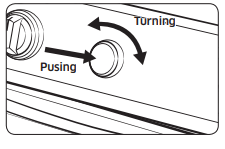
The dial knob can be manipulated as following methods: turning and pushing.
1. Turning
Turning the dial knob clockwise or counterclockwise will show next or previous mode when selecting the cooking mode. Turning the dial knob clockwise or counterclockwise will increase or decrease the value when selecting the cooking temperature or time.
2. Pushing
By pushing the dial knob, current value will be entered.
Cooktop
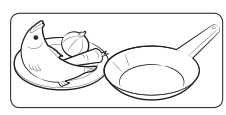
STEP 1 Put all ingredients into a cooking container (pan, pot, etc.).
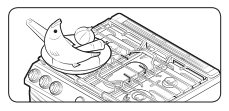
STEP 2 Place the container on a surface burner.
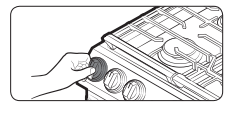
STEP 3 Ignite the surface burner. An LED on the control knob illuminates when you turn the control knob
Gas burners
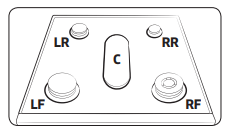
Each burner has a corresponding knob that lets you to set the flame level from LO to HI. In addition, each burner knob has a Lite setting. Turning a knob to Lite ignites the corresponding burner. The burner indicators are located above each knob and show which burner the knob controls. Each burner is designed for specific cooking purposes. See the table below.
| Position | Purpose | Food type | Food type |
| Right Front (RF) 22,000 BTU | Power heating | Boiling food | Maximum output |
| Right Rear (RR) 5,000 BTU | Low simmering | Chocolate, casseroles, sauces | Delicate food that requires low heat for a long time |
| Center (C) 10,000 BTU | Grilling/Griddling | Pancakes, hamburgers, fried eggs, hot sandwiches | General-purpose cooking |
| Left Front (LF) 16,000 BTU | Quick heating | General | General-purpose cooking |
| Left Rear (LR) 9,500 BTU | General heating/ Low simmering | General food, casseroles, tomato sauce * | General-purpose cooking |
Ignition
CAUTION The knob LED indicates if a burner knob has been turned on. It does not indicate if the burner flame is on. Check for an actual flame, whether the knob LED is on or off.
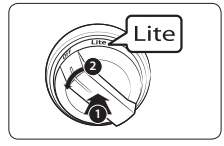
Make sure all surface burners are properly installed. To light a burner:
1. Push in the control knob, and then turn it to the Lite position. The knob LED is on and you will hear a “clicking” sound indicating the electronic ignition system is working properly.
2. After the surface burner lights, turn the control knob to shift it out of the Lite position and turn off the electronic ignition system.
3. Turn the control knob to adjust the flame level.
Manual ignition
If there is a power failure, you can ignite the burner manually. Use caution when doing this.
1. Hold a long gas grill lighter to the surface burner you want to light.
2. Push in the control knob for that burner, and then turn it to the Lite position. Turn on the grill lighter to ignite the burner.
3. After the burner is lit, turn the control knob to adjust the flame level.
Flame level
The flames on the burners should always stay under the cookware, and should not extend beyond the cookware bottom at any time.
WARNING
- Flames larger than the cookware bottom may result in a fire or physical injury.
- When you set a burner to simmer, do not turn the burner knob quickly. Watch the flame to make sure it stays on.
- After turning on a surface burner, make sure that the burner has ignited even if the knob LED is on. Adjust the level of the flame by turning the burner knob.
- Always turn off the surface burner controls before removing cookware. All surface burner controls should be turned OFF when you are not cooking.
- Always turn the burners off before you go to sleep or go out.
- If you smell gas, turn off the gas to the range and call a qualified service technician. NEVER use an open flame to locate a leak.
- If the LED on the control knob doesn't turn on when the surface burner has ignited, call a qualified service technician.
- If the knob LED illuminates, but the surface burner does not ignite, turn off the control knob immediately.
Cookware
Requirements
- Flat bottom and straight sides.
- Tight-fitting lid.
- Well-balanced with the handle weighing less than the main portion of the pot or pan.
Material characteristics
- Aluminum: An excellent heat conductor. Some types of food may cause the aluminum to darken. However, anodized aluminum cookware resists staining and pitting.
- Copper: An excellent heat conductor but discolors easily.
- Stainless steel: A slow heat conductor with uneven cooking performance but is durable, easy to clean, and resists staining.
- Cast-Iron: A poor conductor but retains heat very well.
- Enamelware: Heating characteristics depend on the base material.
- Glass: A slow heat conductor. Use only glass cookware that is specified for range top cooking or oven use.

Size limitations
CAUTION
- Do not place a small pan or pot with a bottom diameter of about 6 inches or less on the center grate. This cookware may tip over. Use the rear burners for this smallsized cookware.
- * : 6 inches or less
- Always make sure cookware handles are turned to the side or rear of the cooktop and not over other surface burners. This will minimize the chance of burns, spillovers, and the ignition of flammable materials that can be caused if pots or pans are bumped accidently.
- When using glass cookware, make sure it is designed for range top cooking.
- Never leave plastic items on the cooktop. Hot air from the vent can melt or ignite plastic items or cause build up of dangerous pressure in closed plastic containers. You may get severe burns if you touch the surfaces near the vent while the oven is operating.
- Make sure you hold the handle of a wok or a small one-handled pot while cooking.
Wok grate
Woks are often used for stir frying, pan frying, deep frying, and poaching. The provided wok grate supports 12” to 14” woks.
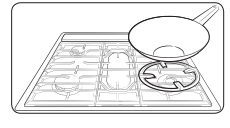
1. Turn off all burners, and wait until the grates completely cool down.
2. Place the wok grate on either side grate.
3. Put a wok on the wok grate. Make sure the wok settles on the wok grate.
4. Turn on the burner, and adjust the flame level as appropriate.
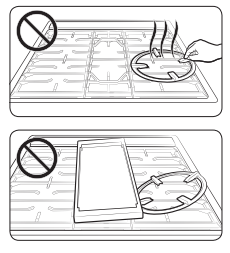
CAUTION
- Do not remove the wok grate until the cooktop grates, surfaces, and wok grate completely cool down.
- When you use the wok with the cooktop or when the oven is on, the wok grate on the cooktop may become very hot. Use oven gloves when placing or removing the wok grate.
- Do not use pans with a flat bottom or woks with a diameter less than the wok ring diameter. The pan or wok may tip over.
- Do not use an oversized pan. The burner flames may spread out, causing damage nearby.
- Do not use the wok grate and the griddle at the same time.
- This cooktop is not designed to flame foods or cook with a wok or wok ring attachment. If foods are flamed, they should only be flamed under a ventilation hood that is on.
Griddle
The removable coated griddle provides an extra cooking surface. This is useful especially when cooking meat, pancakes, or other foods requiring a large cooking area.
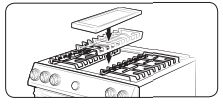
The griddle can be used only with the center burner on the center grate. Use caution when putting the griddle on the center grate.
In most cases, you should preheat the griddle before cooking. See the table below.

CAUTION
- Do not remove the griddle until the cooktop grates, surfaces, and griddle itself cool down.
- If you leave the griddle on the cooktop, it may become very hot when you use the cooktop or oven. Use oven gloves when placing or removing the griddle
- Do not overheat the griddle. This can damage the coating of the griddle.
- Do not use metal utensils that can damage the griddle surface.
- Do not use the griddle for other purposes, for example, as a cutting board or a storage shelf.
- Do not cook excessively greasy foods. The grease may spill over.
- The griddle is quite heavy because it is made of cast iron. Use both hands when placing or removing the griddle.
Gas oven
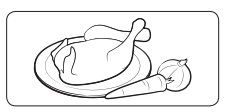
STEP 1 Put all ingredients in a heat-safe container.
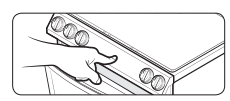
STEP 2 Select a cooking mode, and then start preheating.
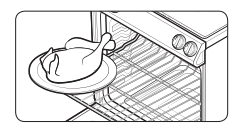
STEP 3 Place the container on a rack.
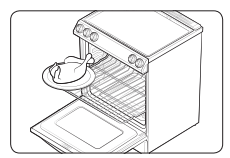
STEP 4 Close the door and start cooking.
Cooking mode
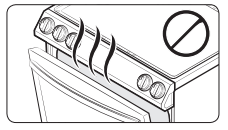
- Make sure to close the door before you start cooking
- If you leave the door open for 20-30 seconds while the oven is in convection bakingroasting, baking, or broiling modes, the oven burner shuts off. To restart the burner, close the door.
NOTE Oven modes will be reordered by the frequently of use and the most frequently used temperature of each mode will be displayed as a defaul

1. To select mode using dial knob (Mode : Bake, Convection Bake, Convection Roast, Air Fry, Broil, etc).
2. If necessary, use the dial knob to change the default temperature. You can set the oven to any temperature.
- You can start right away with the setting value by tapping START.
3. If necessary, you can set the Cook Time and Delay Start when the "Start" displays. Tap START or push the dial knob.
- The oven preheats until it reaches the temperature you set.
- It will beep when it reaches the set temperature.
- When preheating is complete, place the food in the oven, and then close the door.
4. When cooking is complete, tap  and then take out the food.
and then take out the food.
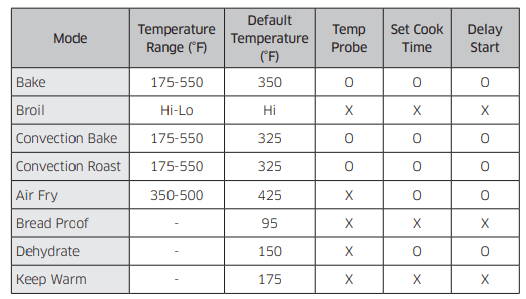
Using the oven racks
Your oven range comes with 2 racks and 7 rack positions. The rack positions are delineated by rack guides which support the racks. Each rack guide has a stop that prevents the rack from loosening during the oven's operation. Each rack has stoppers that need to be placed correctly on the rack guides. The stoppers prevent the racks from accidently coming out of the oven completely when you pull the racks out
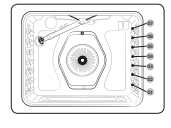
| Type of food | Rack position |
| Broiling hamburgers | 6 |
| Broiling meats or small cuts of poultry, Fish | 4-5 |
| Bundt cakes, Pound cakes, Frozen pies, Casseroles | 3-4 |
| Fresh Pizza, Angel food cakes, Small roasts | 2 |
| Turkey, Large roasts, Hams | 1 |
NOTE
- This table is for reference only.
- For cooking fresh or homemade foods, spread the oil over a larger area more evenly, crisping up the food more effectively
Inserting and removing an oven rack
To insert an oven rack
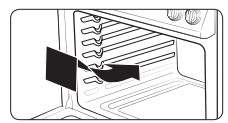
1. Place the rear end of the rack on a rack guide.
2. Slide the rack into the rack guide while holding the front end of the rack.
To remove an oven rack
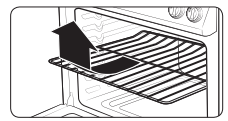
1. Pull out the rack until it stops.
2. Pull up the front end of the rack and remove it from the rack guide.
Rack and Pan placement
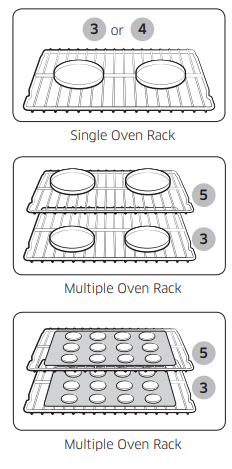
Centering the baking pans in the oven as much as possible will produce better results. If baking with more than 1 pan, place the pans so each has at least 1˝ to 1½˝ of air space around it.
When baking on a single oven rack, place the oven rack in position 3 or 4. See the figure on the left. When baking cakes and cookies on multiple racks, place the oven racks in positions 3 and 5. See the figure on the left.
Using Multiple Oven Racks
| Type of Baking | Rack Positions |
| Cakes | 3 and 5 |
| Cookies | 3 and 5 |
Before using the racks
The oven has two racks. Each rack has stops that need to be placed correctly on the supports. These stops will keep the rack from coming completely out.
REMOVING THE RACKS
1. Pull the rack straight out until it stops.
2. Lift up the front of the rack, and then pull it out.
REPLACING THE RACKS
1. Place the end of the rack on the support.
2. Tilt the front end up and push the rack in
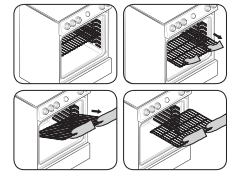
CAUTION
- Do not cover a rack with aluminum foil or place aluminum foil on the oven bottom. This will hamper heat circulation, resulting in poor baking, and may damage the oven bottom.
- Arrange the oven racks only when the oven is cool
Recipe guide
Baking
Bake is used to cook cakes, cookies, and casseroles. Always preheat the oven first. Baking temperatures and times will vary depending on the ingredients and the size and shape of the baking pan used. Dark or nonstick coatings may cook faster with more browning.
Convection cooking
The convection fan at the back of the oven circulates hot air evenly throughout the oven cavities so that food is evenly cooked and browned in less time than with regular heat.

| Convection baking |
|
| Convection roasting |
|
Broiling
Broiling uses the oven broil burner at the top of the oven to cook and brown food. Meat or fish must be put on a broiling grid in a broiling pan. Preheating for 5 minutes before broiling is recommended.
Broiling guide
For detailed instructions, see page 25.
NOTE
- This is for reference only.
- Preheating for 5 minutes before broiling is recommended.
- The size, weight, thickness, starting temperature, and your doneness preference will affect broiling times.
- This guide is based on meats at refrigerator temperature.
- Use the broil rack for the best results.
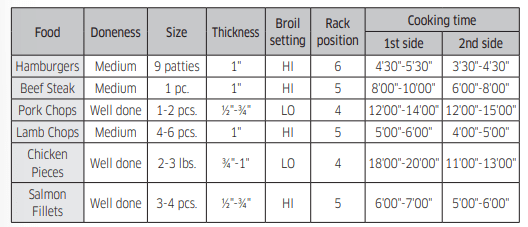
Air Fry mode
This feature uses hot air for crispier and healthier frozen or fresh foods without or less oil than normal convection modes. For best results, use this mode in single oven mode and place the Air Fry tray in position 3. The temperature can be set between 350 °F and 500 °F. Preheating is not necessary for this mode. Follow recipe or package directions for set temperature, time or quantity.
How to set the oven for Air Fry mode
1. Place the tray on rack position 3.
2. Select Air Fry mode using the dial knob.
3. Use the dial knob to change the default temperature. Enter the suggested temperature for your food as recommended by its instructions. The default temperature is 425 °F.
4. Push the dial knob and set the Cook Time or Delay Start, if necessary.
5. Tap START or push the dial knob.
6. When cooking is complete, tap  and take out the food.
and take out the food.
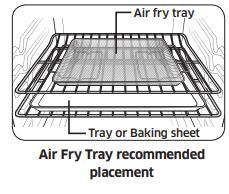
NOTE
- Place a baking sheet or tray on the rack below the Air Fry tray to catch any drippings. This will help to reduce splatter and smoke.
- Air Fry is designed for baking on a single oven rack. Place food on rack position 3 for best results.


Dehydrate
Dehydrate dries food or removes moisture from food via heat circulation. After drying the food, keep it in a cool and dry place. For fruit, adding lemon (or pineapple) juice or sprinkling sugar on the fruit helps the fruit retain sweetness.
Bread Proof
Proof mode provides an optimal temperature for the bread proofing process, and therefore does not require a temperature adjustment. For the best results, always start the Proof option with a cool oven.
Temperature probe
The temperature probe lets you cook roasts and poultry to the exact internal temperature you want, taking the guess work out of determining whether a piece of meat is done or not.
You can use the temperature probe with the oven set to Bake, Convection Bake, or Convection Roast. When you use the temperature probe, the internal temperature is shown on the display when it reaches 100 °F.
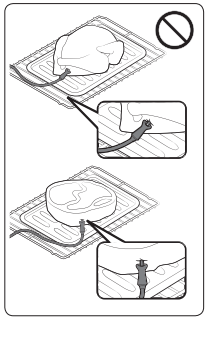
1. Push the temperature probe into the meat so that the tip of the probe reaches the center of the meat.
When you insert the temperature probe, make sure it does not contact bone, fat, or gristle.
- For bone-in meats, insert the probe into the center of the lowest and thickest portion of the piece.
- For whole poultry (turkey, large chickens, etc.), insert the probe into the thickest part of the inner thigh, parallel to the leg.
- If you remove the temperature probe while cooking is in process, the oven shuts off in 60 seconds.
- The temperature probe may not function properly if inserted into frozen food. (The temperature probe icon doesn’t appear.)
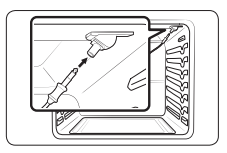
2. Insert the temperature probe plug into the socket on the top side wall of the oven.
3. Select the cooking operation (Convection Bake, Convection Roast, or Bake) and the temperature.
4. Set the internal temperature between 100 °F to 200 °F using the dial knob.

5. Set Delay Start if necessary.
6. Tap START. When the food reaches the set internal temperature, the oven automatically shuts off, and then beeps.
Temperature table

CAUTION
- To protect the temperature probe, be careful not to insert the probe so that it comes out of the meat. Make sure that the probe is inserted around the center of the meat.
- Do not store the probe in the oven.
- Do not leave the probe inside the oven during the Self-Cleaning or Broiling cycle. This will cause permanent damage to the probe.
- To avoid damage to the probe, defrost food in advance.
- Do not use tongs when inserting or removing the probe. Tongs can damage the probe.
- Use the temperature probe only for the applicable cooking operations.
Cooking options
Cook Time
Timed cooking sets the oven to cook foods at a set temperature for a set length of time. The oven automatically turns off when it finishes. Mode: Bake / Convection Bake / Convection Roast / Air Fry / Dehydrate

1. Select a desired cooking mode, such as Bake.
2. If necessary, change the temperature using dial knob.
3. When "Start" displays, select Set Cook Time using the dial knob.
4. Set the cooking time between 1 minute and 9 hours and 59 minutes (9:59) using the dial knob.
5. Tap START. The oven will automatically turn on and start preheating. The temperature will increase until it reaches the temperature you set. The oven starts cooking for the amount of time you set.
6. When preheating is complete, put the container with the food on a rack, and then close the door.
7. When the cooking time has elapsed, the oven will automatically shut off and then beep
Delay Start
Delay Start function lets you delay when the oven will start cooking operation. You can set Delay Start so that it delays the automatic start of a cooking operation you select by up to 12 hours. Mode: Bake / Convection Bake / Convection Roast / Air Fry / Dehydrate / Self Clean

1. Place the container with the food on a rack, and then close the door.
2. Start a desired cooking mode, such as Bake.
3. If necessary, change the temperature using the dial knob.
4. When "Start" displays, select Set Delay Start using the dial knob.
5. Set the starting time using the dial knob.
6. Tap START.
7. The oven starts cooking at the set time
Special features
To enable the Sabbath option

1. Start a Bake Mode (single mode only).
2. Tap  and select the Sabbath option.
and select the Sabbath option.
3. Turn the dial knob to select On.
4. Push the dial knob to save the changes.
More Functions
Tap  the button on the control panel, and then turn the dial knob to use additional functions or change various settings for your oven. Please refer to the following table for detailed descriptions.
the button on the control panel, and then turn the dial knob to use additional functions or change various settings for your oven. Please refer to the following table for detailed descriptions.

| Setting | Description |
| Timer | Timing function |
| Self-Clean |
Burn off leftover grease and residue completely or reduce them. NOTE See page 42 |
| Favorite | Save the cooking mode and value frequently used |
| My Mode List | Add or remove cooking modes |
| Lock | Lock the control panel and the door. |
| Auto Conversion | Automatically lower the temperature by 25 °F (15 °C) when using Convection Bake. |
| Screen Timeout | Adjust the display timeout |
| Set time |
Set the clock to display the current time. NOTE See page 16 |
| Set Date |
Set the clock to display the current Date. NOTE See page 16. |
| Time format |
Set the clock to display the time in the 12-hour or 24-hour format. NOTE See page 16 |
| 12hr energy saving | Automatically turns off the oven 12 hours after baking starts or 3 hours after broiling starts. |
| Sound | Turn the oven's sound (beeps) on or off. |
| Sabbath |
Setting Sabbath mode ON/Off. NOTE See page 30. |
Timer
The timer gives you an extra timer you can use to time cooking tasks, such as boiling eggs. It does not, however, start or stop any cooking operation. You can set the timer from 1 minute to 9 hours and 59 minutes.
1. Tap  To select Timer using the dial knob.
To select Timer using the dial knob.
2. Enter a desired time using the dial knob.
3. When done, push the dial knob.
4. To cancel the Timer settings, push or turn the dial knob. To select cancel using the dial knob.
5. When the set time elapses, the oven beeps and displays the “Time is up.”. Timer starts Counting up the time after finishing Timer, it lasts for only 10 minutes. Push or turn the dial knob.
Favorite
You can add up to 10 frequently used cook settings to the Favorites list to easily apply them in the future. Adding the new cook settings to the Favorites
1. Tap  and select Favorite using the dial knob.
and select Favorite using the dial knob.
2. Set the cook setting (Mode, Temperature, Cook Time, Probe Temp).
3. If necessary, select option (Cook Time and Probe Temp) and confirm to save.
Editing the favorite cook settings
1. Tap  and select Favorite using the dial knob.
and select Favorite using the dial knob.
2. Select Edit.
3. Change the cook settings. Items that appear on the list may change upon what you select. (Cook mode, temperature, Cook Time, etc.)
Deleting the favorite cook settings
1. Tap  and select Favorite using the dial knob.
and select Favorite using the dial knob.
2. Select Delete.
3. Select the favorite cook setting you want to delete.
Using the favorite cook settings
1. The saved Favorite item will be displayed as one of the oven modes. Select your favorite item among the modes.
2. Tap START.
My Mode List
You can add or remove the cooking modes and create a custom list.
1. Tap  and select My Mode List using the dial knob.
and select My Mode List using the dial knob.
2. Turn and push the dial knob to check or uncheck the modes.
3. Select Save to save the changes.
Lock
Lock the control panel and the door to prevent accidental operations or product tipping. Touch  and select Lock using the dial knob to lock or unlock both the control panel and the door. When the Oven Lock is on, the oven panel does not operate and the oven door is locked and cannot be opened.
and select Lock using the dial knob to lock or unlock both the control panel and the door. When the Oven Lock is on, the oven panel does not operate and the oven door is locked and cannot be opened.
Auto Conversion
Auto Conversion automatically converts regular baking temperatures to convection baking temperatures. For example, if you enter a regular recipe temperature of 350 °F and tap START, the oven displays the converted temperature of 325 °F.
1. Tap and select Auto Conversion using the dial knob.
and select Auto Conversion using the dial knob.
2. Turn the dial knob to select On/Off.
3. Push the dial knob to save the changes.
Screen Timeout
You can set the length of time before the screen saver turns on.
1. Tap  and select Screen Timeout using the dial knob.
and select Screen Timeout using the dial knob.
2. Turn the dial knob to select Setting (5min, 10min, 15min, 20min and always on).
3. Push the dial knob to save the changes.
NOTE Energy consumption may increase depending on your setting. When the timeout setting is set to "Always on", the brightness of the LCD automatically changes to level 2 if there is no action for 3 minutes.
12hr Energy Saving
This will automatically turn off the oven 12 hours after baking starts or 3 hours after broiling starts.
1. Tap  and select 12hr Energy Saving using the dial knob.
and select 12hr Energy Saving using the dial knob.
2. Turn the dial knob to select On/Off.
3. Push the dial knob to save the changes.
Sound Turn sound (beeps) On/Off.
1. Tap  and select Sound using the dial knob.
and select Sound using the dial knob.
2. Turn the dial knob to select On/Off.
3. Push the dial knob to save the changes.
System Setting
Tap and hold for 3 sec @ on the control panel, and then turn the dial knob to use additional functions or change various settings for your oven. Please refer to the following table for detailed descriptions.
| System Setting | Description |
| Wi-Fi |
Set the WI-FI mode to ON/Off. NOTE See page 36 |
| Language | Select a preferred language from English, French. |
| Temp. Unit | Set the oven control to display temperatures in Fahrenheit or Centigrade |
| Calibarate Temperature | Recalibrate the oven temperature. |
| My Pattern | Remember and store the cook settings. |
| Welcome Lighting | Shown on cooktop knobs when the oven display wakes up |
| Demo mode | Used by retailers for display purposes only |
| Reset | Reset to factory default setting. |
Language
Select a preferred language from English, French. You can not change the language during cooking.
1. Tap and hold for  3 sec.
3 sec.
2. Select Language using the dial knob.
3. Turn the dial knob to select Language and push to save the changes.
Temp. Unit (°F or °C)
Change the temperature format of the oven to Fahrenheit or Centigrade. The default is Fahrenheit.
1. Tap and hold  for 3 sec.
for 3 sec.
2. Select Temperature unit using the dial knob.
3. Turn the dial knob to select unit and push to save the changes.
Calibarate Temperature
The oven temperature has been calibrated at the factory. When first using the oven, follow the recommended recipe times and temperatures. If it appears that the oven is too hot or too cool, you can recalibrate the oven temperature. Before recalibrating, test a recipe by using a temperature setting that is higher or lower than recommended. The baking results should help you decide how much of an adjustment is needed. The oven temperature can be adjusted by ±35 °F (±19 °C).
1. Tap and hold  for 3 sec.
for 3 sec.
2. Select Calibarate Temp using the dial knob.
3. Turn the dial knob to adjust temperature value.
4. Push the dial knob to save the changes.
NOTE This adjustment does not affect the broiling or the self-cleaning temperature, and is retained in memory after a power failure.
My Pattern This function remembers and stores the cook settings frequently used by the user.
1. Tap and hold  for 3 sec.
for 3 sec.
2. Select My Pattern using the dial knob.
3. Turn the dial knob to select On/Off and push to save the changes.
Welcome Lighting
Lighting pattern will be shown on cooktop knobs when the oven display wakes up.
1. Tap and hold  for 3 sec.
for 3 sec.
2. Select Welcome Lighting using the dial knob.
3. Turn the dial knob to select On/Off and push to save the change.
Demo mode
This is used by retailers for display purposes only. In this mode, the heating element does not operate.
1. Tap and hold  for 3 sec, and select System settings using the dial knob.
for 3 sec, and select System settings using the dial knob.
2. Select Demo mode using the dial knob.
3. Turn the dial knob to select On/Off and push to save the changes.
Reset
Reset your oven th its factory default settings. This will erase all data and can't be recovered.
1. Tap and hold for 3 sec.
for 3 sec.
2. Select Reset using the dial knob.
3. Turn the dial knob to select Cancel/Reset.
Smart Control
How to connect the oven
1. Download and open the SmartThings app on your smart device.
2. Follow the app's on-screen instructions to connect your range.
3. Once the process is complete, the connected icon located on your range displays and the app will confirm you are connected.
4. If the connection icon does not turn on, follow the instruction on the app to reconnect.

To control the oven remotely
1. Tap  appears in the display. The oven can now be controlled remotely with a connected device.
appears in the display. The oven can now be controlled remotely with a connected device.
2. Select the oven icon on the SmartThings app to open the Oven Control app. When the app is connected to the oven, you can perform the following functions through the application:
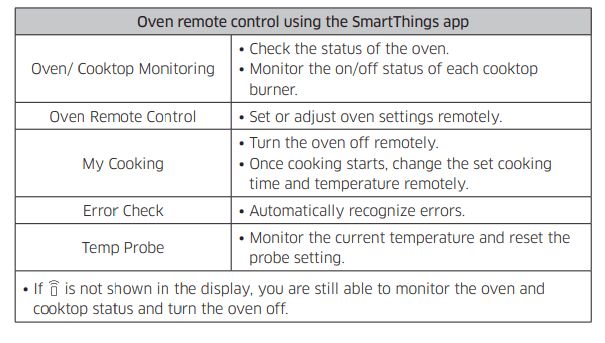
Wi-Fi On/Off
If you turn WI-FI mode Off, mobile devices cannot connect to the range.
1. Tap and hold  for 3 sec.
for 3 sec.
2. Select Wi-Fi using the dial knob.
3. Turn the dial knob to select On/Off and push to save the changes.
Maintenance
Cleaning
Control panel
First, lock the control panel and the door to prevent accidental operations and/or product tipping.
1. Tap and select Lock using the dial knob to lock both the control panel and the door.
and select Lock using the dial knob to lock both the control panel and the door.
2. Clean the control panel using a soft cloth dampened with plain water, warm soapy water, or glass cleaner. Do not spray cleansers directly onto the control panel.
3. When done, touch  and select Lock using the dial knob to unlock both the control panel and the door.
and select Lock using the dial knob to unlock both the control panel and the door.
Stainless steel surface
1. Remove any spills, spots, and grease stains using a soft, wet cloth.
2. Apply an approved stainless steel cleanser to a cloth or paper towel.
3. Clean one small area at a time, rubbing with the grain of the stainless steel if applicable.
4. When done, dry the surface using a soft, dry cloth.
5. Repeat steps 2 through 4 as many times as necessary
Racks
To keep the racks clean, remove them from the cavity, and soak them in lukewarm soapy water. Then, scour soil off of the racks using a plastic scouring pad. If the racks do not slide in and out smoothly after you have cleaned them, rub the side rail guides with wax paper or a cloth containing a few drops of cooking oil. This will help the racks glide more easily on their tracks.
Air fry tray
To keep the Air fry tray clean, remove them from the cavity, and soak them in Lukewarm soapy water. Then, scour soil off of the Air fry tray using a plastic scouring pad.
Door
Do not remove the inner gasket of the oven door for cleaning.
Door inner side
- Inner surface: Clean the inner side of the door manually using a soapy plastic scouring pad, and then wipe with a dry cloth. Take care not to get the gasket wet or allow moisture into the door.
- Inner glass: The inner glass is cleaned automatically during the self-cleaning cycle.
Door outer side
- Outer surface: Follow the cleaning instructions for the stainless steel surface in the previous section.
- Outer glass: Clean the outer glass using a glass cleanser or soapy water. Rinse and dry thoroughly. Take care not to get the gasket wet or allow moisture into the door.

CAUTION
Do not let moisture enter the door or contact the door gasket (*). Moisture may reduce the gasket’s performance.
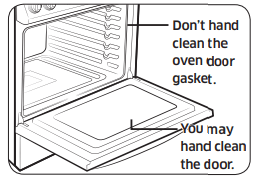
- Use soap and water to thoroughly clean the top, sides, and front of the oven door. Rinse well. You may use a glass cleaner on the outside glass of the oven door. DO NOT immerse the door in water. DO NOT spray or allow water or the glass cleaner to enter the door vents. DO NOT use oven cleaners, cleaning powders, or any harsh abrasive cleaning materials on the outside of the oven door.
- DO NOT clean the oven door gasket. The oven door gasket is made of a woven material which is essential for a good seal. Care should be taken not to rub, damage, or remove this gasket.
Burner controls
Make sure all surface burner knobs are in the OFF position.
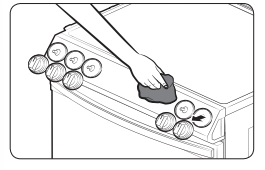
1. Pull knobs off the control valve stems.
2. Clean the knobs in warm, soapy water. Then, rinse and dry them thoroughly.
3. Clean the stainless steel surfaces using stainless steel cleaner.
4. Re-attach the knobs to the control valve stems.
Cooktop surface
The porcelain-enameled cooktop surface needs to be kept clean. We recommend that you remove food spills immediately after they take place.
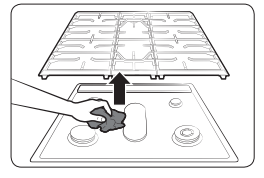
1. Turn off all surface burners.
2. Wait until all burner grates cool down, and then remove them.
3. Clean the cooktop surface using a soft cloth. If food spills run into gaps of the burner components, remove the burner cap and the head, and wipe up the spills.
4. When cleaning is finished, reinsert the burner components, and then put the burner grates back into position.
Burner grates and components
Turn off all surface burners and make sure they have all cooled down.

1. Remove the center burner grate(C) following both sides grates.(L/R)
2. Remove the burner caps from the burner heads.
3. Remove the burner heads from the valve manifolds to reveal the starter electrodes.
4. Clean all removable grates and burner components in warm, soapy water. Do not use steel-wool pads or abrasive cleaners
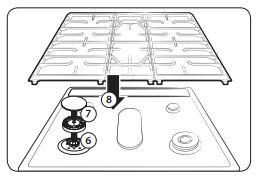
5. Rinse and dry grates and burner components thoroughly.
6. Return the burner heads to their positions on top of the manifold valves. Make sure a starter electrode is inserted through the hole in each burner head.
7. Return the burner caps to their positions on top of the burner heads. To ensure proper and safe operation, make sure the burner caps lie flat on top of the burner heads.
8. Reinstall the burner grates in their respective positions.
9. Turn on each burner and check if it operates properly. After verifying that a burner operates normally, turn it off.
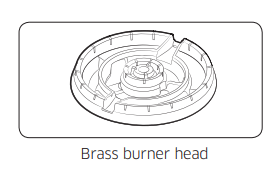
NOTE
- The brass parts of your burner will change color with use. However, this will not affect performance and you can clean the brass parts with a brass cleaner.
- After cleaning, confirm that the burner port openings aren't plugged.
- Do not wash any burner components in a dish washer.
Burner reinstall guide
Dual burner head
1. Orient the burner head so that the opening for the electrode lines up with the electrode.
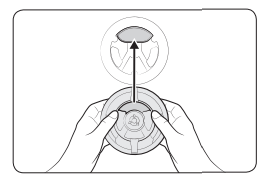
2. Install the burner head so that the electrode passes through the opening for the electrode. Make sure the burner head lies flat on the stove top.

Round burner head
1. Orient the burner head so that the opening for the electrode lines up with the electrode.
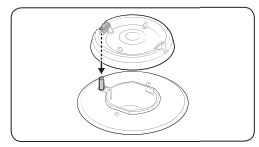
2. Install the burner head so that the electrode passes through the opening for the electrode. Make sure the burner head lies flat on the stove top.
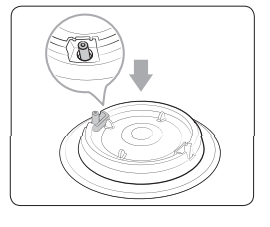
Oval burner
1. Orient the burner head so that the opening for the electrode lines up with the electrode.
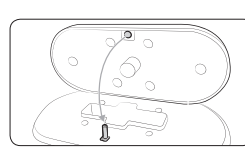
2. Install the burner head so that the electrode passes through the opening for the electrode. Make sure the burner head lies flat on the stove top.

Burner cap
1. Match the burner caps to the burners by size, and then reinstall the caps on the burner heads
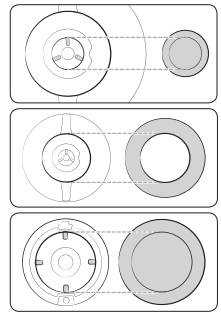
CAUTION Make sure each cap is reinstalled on the correct burner head, is centered on the burner head, and lies flat.
CAUTION Make sure all burner components (heads and caps) are reinstalled properly. They will be stable and rest flat when correctly installed.
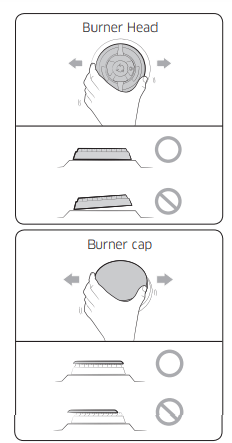
NOTE The precise simmer burner (RR) cap and the inner Dual burner (RF) cap are interchangeable.
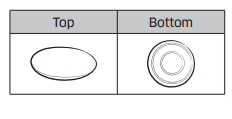
Self-cleaning
This self-cleaning oven uses high temperatures (well above cooking temperatures) to burn off leftover grease and residue completely or reduce them to a finely powdered ash that you can wipe away with a damp cloth.
To perform the self-cleaning cycle Make sure the door lock is released. Remove all racks from the oven cavity

1. Make sure the oven door is closed completely and unlocked.
2. Tap  and select Self Clean using the dial knob. Then, select the cleaning time by turning the dial knob one or more times in accordance with the table below.
and select Self Clean using the dial knob. Then, select the cleaning time by turning the dial knob one or more times in accordance with the table below.
| Left turn | Default | Right turn |
| 2-hour cycle | 3-hour cycle | 5-hour cycle |
3. Tap START. The oven door is locked and the oven begins to heat up.
4. When the self-cleaning cycle is complete, the oven beeps. The door will remain locked until the oven temperature falls below 400 °F (200 °C). You can open the door when it is safe to open.
NOTE Make sure all surface burners are off while the oven is performing a self cleaning cycle. Self-clean will not operate if a surface burner is on

To delay starting a self-cleaning cycle

1. Repeat steps 1 and 2 on the previous page.
2. Select Set Delay Start.
3. Set the time you want the oven to start self-cleaning using the dial knob.
4. Tap START. The oven will start self-cleaning at your specified time.
To cancel the self-cleaning cycle
You may find it necessary to stop or interrupt a self-cleaning cycle due to smoke in the oven. To turn off the self-cleaning cycle, tap OFF. The cycle turns off, but the door remains locked and the Lock icon blinks until the oven temperature falls below 400 °F (200 °C)
After self-cleaning
- The door stays locked until the internal oven temperature falls below 400 °F.
- When the oven has cooled down, wipe the oven surfaces with a cloth to remove ash residue.
- Stubborn stains can be removed using a steel-wool pad. Lime deposits can be removed using a vinegar-soaking cloth.
- If you are not satisfied with the cleaning results, repeat the cycle. Wait until the oven cools down, and then start a new cycle.
- The cooling fan automatically runs for certain amount of time after self-cleaning.
- Self-cleaning does not operate within 2 hours after running the self-cleaning cycle.
Replacing the oven light
Oven light
The oven light is a standard 40-watt appliance bulb. It comes on when you open the oven door.
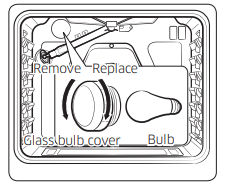
1. Turn off the oven.
2. Make sure the oven and oven light are cool.
3. Open the door, and remove the glass cover by turning it counterclockwise.
4. Remove the oven light from the socket by turning it counterclockwise.
5. Insert a new 40-watt appliance bulb into the socket, and then turn it clockwise to tighten.
6. Reinsert the glass cover, and then turn it clockwise to tighten
Removing and reinstalling the oven door
How to remove the door
1. Open the door completely.
2. Pull the hinge locks down toward the door frame to the unlocked position.
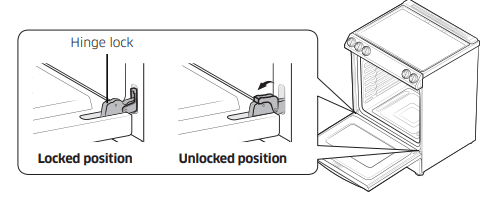
3. Firmly grasp both sides of the door at the top.
4. Close the door to the door removal position, which is approximately 5 degrees from vertical (Fig. 1).
5. Lift the door up and out until the hinge arms are clear of the slots (Fig. 2).
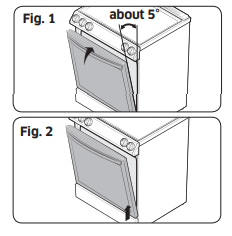
How to reinstall the door
1. Firmly grasp both sides of the door at the top.
2. With the door at the same angle as the removal position, slide the indentations of the hinge arms into the bottom edges of the hinge slots. The notches in each hinge arm must be fully inserted into the bottoms of each slot.
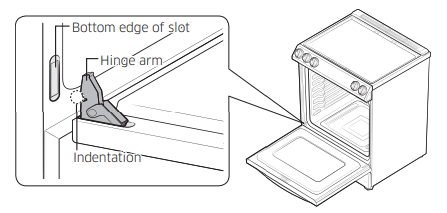
3. Open the door fully. If the door will not open fully, the indentations are not inserted correctly in the bottom edges of each slot.
4. Push the hinge locks up against the front frame of the oven cavity into the locked position.
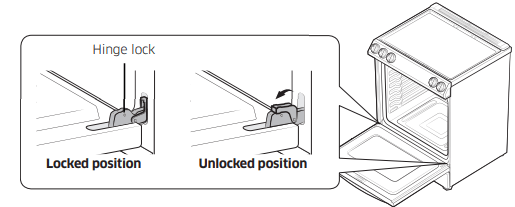
5. Close the oven door.
How to remove and reinstall the Storage drawer
Storage drawer
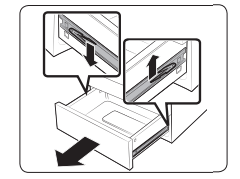
1. Slide open the drawer until it stops.
2. Locate the roller guide clips on either side. Using both hands, pull down the left clip while lifting the right clip, and then remove the drawer.
3. Clean the drawer in warm, soapy water using a cloth or soft brush. Then, rinse and dry it thoroughly.
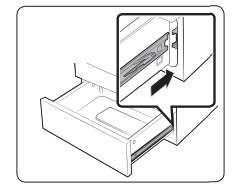
4. Put the drawer in the roller guides on either side, and then snap the clips into place.
Troubleshooting
If you encounter a problem with the range, check the tables starting below, and then try the suggested actions.
Checkpoints
Gas safety
| Problem | Possible cause | Action |
| You smell gas | The surface burner knob is not in the OFF position and the burner is not lit. | Turn the burner knob to OFF. |
| There is a gas leak | Clear the room, building, or area of all occupants. Immediately call your gas supplier from a neighbor’s phone. Do not call from your phone. It is electrical and could cause a spark that could ignite the gas. Follow the gas supplier’s instructions. If you cannot reach your gas supplier, call the fire department. |
Surface burner
| Problem | Possible cause | Action |
| All burners do not light. | The power cord is not plugged into the electrical outlet | Make sure the electrical plug is plugged into a live, properly grounded outlet. |
| A fuse in your home may be blown or the circuit breaker may have tripped | Replace the fuse or reset the circuit breaker. | |
| The gas supply is not properly connected or turned on. | See the Installation Instructions that came with your range. | |
| Surface burners do not light. | The control knob is not set properly. | Push in the control knob and turn it to the Lite position. |
| The burner caps are not in place. The burner base is misaligned. | Clean the electrodes. Put the burner cap on the burner head. Align the burner base | |
| Surface burner clicks during operation. | The control knob has been left in the Lite position | After the burner lights, turn the control knob to a desired setting. If the burner still clicks, contact a service technician. |
| The burners do not burn evenly | Surface burner components and caps are not assembled correctly and level. | See page 41. |
| The surface burners are dirty. | Clean the surface burner components. (See page 40.) | |
| Very large or yellow surface burner flames. | The wrong burner orifice is installed. | Check the burner orifice size. Contact your installer if you have the wrong orifice (LP gas instead of natural gas or natural gas instead of LP gas). |
| Surface burners light but oven burners do not light | The oven door lock is turned on. | The display will show the Lock icon. Hold the oven door open and Tap and hold START for 3 seconds. The oven will beep and the Lock icon will turn off. |
| The Gas Pressure Regulator shut off switch is in the off position. | Call a qualified service technician. |
Oven
| Problem | Possible cause | Action |
| The oven control beeps and displays an information code. | There may be an issue with your oven. See the “Information codes” chart on page 52. | Tap OFF, and then restart the oven. If the problem persists, disconnect all power to the range for at least 30 seconds and then reconnect the power. If this does not solve the problem, call for service |
| The oven will not turn on. | The oven is not completely plugged into the electrical outlet. | Make sure the electrical plug is fully inserted into a live, properly grounded outlet. |
| A fuse in your home may be blown or the circuit breaker may have tripped. | Replace the fuse or reset the circuit breaker. | |
| The oven temperature is too hot or cold. | The oven thermostat needs adjustment. | See page 34. |
| The oven burner will not shut off. | The oven door lock is turned on. | The display will show the Lock icon. Hold the oven door open and tap and hold START for 3 seconds. The oven will beep and the Lock icon will turn off. |
| The Sabbath function has been activated. | SAb and the time of day will show in the display. All other controls and signals will be deactivated. To cancel the Sabbath function and reactivate the light switch and other controls, tap and hold  for 3 seconds. for 3 seconds. |
|
| The oven light (lamp) will not turn on. | The oven door lock is turned on. | The display will show the Lock icon. Hold the oven door open, and then tap and hold START for 3 seconds. The oven will beep and the Lock icon will turn off. |
| The Sabbath function has been activated. | SAb and the time of day will show in the display. All other controls and signals will be deactivated. To cancel the Sabbath function and reactivate the light switch and other controls, tap and hold  for 3 seconds. for 3 seconds. |
|
| A loose or burned-out bulb | See page 44. | |
| The switch operating the oven light needs to be replaced. | Call for a qualified service technician. | |
| The oven smokes excessively during broiling | Meat or food was not properly prepared before broiling | Cut away excess fat and/or fatty edges that may curl. |
| Improperly positioned top oven rack. | See the broiling guide on page 26 | |
| The controls are not being set properly. | See page 25. | |
| Greasy buildup on oven surfaces. | Regular cleaning is necessary when broiling frequently | |
| Cooking is finished, but the cooling fan is still running. | The fan automatically runs for a certain amount of time to ventilate the inside of the oven. | This is not a product malfunction. The fan is designed to run automatically for a period of time to cool down the oven. |
| The oven will not self-clean. | The oven door lock is turned on. | The display will show the Lock icon. Hold the oven door open, and then tap START for 3 seconds. The oven will beep and the Lock icon will turn off. |
| The Smart Divider is installed in the oven. | Self-clean will not operate with the Smart Divider installed. Remove it from the oven. | |
| The oven is too hot. | Let the oven cool down, and then reset the controls. The self-clean cycle will not lock the oven door if the oven temperature is too hot. The door must lock before the selfclean cycle can start | |
| The self-cleaning oven controls are not properly set | Reset the self-cleaning oven controls. (See page 42.) | |
| A surface burner is on | Turn off the surface burner. Self-clean will not operate if a surface burner is on. | |
| A crackling or popping sound. | This is normal. | This is the sound of the metal heating and cooling during any cooking or cleaning function. |
| Excessive smoking during a selfcleaning cycle. | This is the first time the oven has been cleaned | This is normal. The oven will always smoke more the first time it is cleaned. Wipe up all excessive soil before starting the selfcleaning cycle. If smoke persists, tap OFF. Open the windows to clear the smoke from the room. After the oven has cooled and unlocked, wipe up excessive soil, and then reset the oven for self-cleaning |
| The oven door will not open after a self-cleaning cycle. | This is normal. | The oven door will stay locked until the oven temperature drops below 400 °F. |
| The oven is not clean after a selfcleaning cycle. | A fine dust or ash is normal. | This can be wiped clean with a damp cloth. Set the self-cleaning cycle for a longer cleaning time. The cycle was not long enough to burn off the dirt buildup. Extremely dirty ovens require hand-cleaning of excessive spillovers and food buildup before you start a self-cleaning cycle. Multiple self-cleaning cycles may be necessary to completely clean the oven. |
| There is steam or smoke coming from under the control panel. | This is normal. | The oven vent is located there. More steam is visible when you are using the convection functions or when baking or roasting multiple items at the same time |
| A burning or oily odor coming from the vent. | This is normal for a new oven and will disappear within 1/2 hour of the first bake cycle. | To speed the process, set a self-cleaning cycle for a minimum of 3 hours. (See page 43.) |
| Strong odor. | This is temporary | The insulation around the inside of the oven emits an odor the first few times the oven is used |
| The oven racks are difficult to slide. | This is normal | Apply a small amount of vegetable oil to a paper towel, and then wipe the edges of the oven racks with the paper towel. Racks become dull and hard to slide if they are left in the oven during a self-clean cycle |
| Fan noise. | This is normal | The convection fan runs until the function is over or the door is opened. |
| The convection fan is not working. | This is normal | The fan starts automatically when the oven reaches the preheat temperature. |
| The product is not level. | The appliance has been installed improperly. The leveling leg(s) is (are) damaged or uneven. | Make sure the floor is level, strong, and stable. If the floor sags or slopes, contact a carpenter. Check and level the range. (See the Installation Instructions.) |
| The kitchen cabinets are not properly aligned and make the range appear to be not level. | ||
| The display goes blank. | The electrical outlet Ground Fault Interrupter (GFI or GFCI) has been tripped and needs to be reset. Your digital control has been damaged. | Replace fuse or reset circuit breaker |
| Food does not bake or roast properly in the oven. | The wrong cooking mode is selected. | See page 21. |
| The oven racks have not been positioned properly for the foods being cooked. | See page 22. | |
| Incorrect cookware or cookware of improper size is being used. | See page 17. | |
| The oven thermostat needs adjustment. | See page 34. | |
| There is aluminum foil on racks or oven bottom. | Remove foil. | |
| The clock or timers are not set correctly | See page 16. | |
| Food does not broil properly in the oven. | The oven controls are not set properly | See page 25 |
| The oven door was not closed during broiling | See page 25 | |
| The rack has not been properly positioned. | See the broiling guide on page 26. |
Information codes
| Code symbol | Meaning | Solution |
 |
Oven sensor malfunction. | 1. Tap OFF, and then restart the oven. 2. If the problem persists, disconnect all power to the oven range for at least 30 seconds and then reconnect the power |
 |
The oven is overheating | |
 |
Check the Control PBA NTC Sensor | |
 |
Temp probe malfunction | |
 |
Check the PBA NTC Sensor | |
 |
Check the PBA NTC Sensor. | |
 |
Check the cooling system | |
 |
Control pad malfunction. | |
 |
Door lock malfunction | |
 |
PCB signal malfunction | |
 |
Touch IC and PCB signal malfunction | |
 |
Oven vent blocked. | 1. If oven vent or cover air is blocked by aluminum foil or others, remove that and restart oven. See other models: NX58T5601SW/AA NX58T5601SB/AA NX58T7511SG/AA NX58T7511SS/AA LS27F350FHEXXY 2. To reset error, disconnect power or tap 'OFF' after opening the oven door at least 60 seconds |
